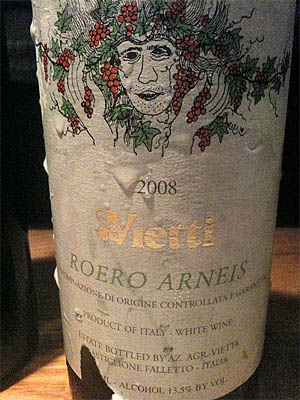Decoding Italian Wine Classifications
Even for the experienced wine drinker, determining if a bottle of wine you have never tried before is going to be good is difficult. The label can tell you what grapes were used, where they were grown, and how much alcohol the resulting wine is packing, but so many other factors determine the taste — the weather that year, the soil in that vineyard, how the winemaker aged the blend — there's always a bit of a gamble.
If the bottle under consideration is from Italy, another label note may catch your eye — the certification. Usually written both on the bottle and a paper stick surrounding the cork, the terms DOCG, DOC, and IGT are bestowed upon Italian wines based on what regulations and specifications the vintners followed when creating them. A caste system of sorts, most consumers assume that the more distinguished the certification, the better the wine. And the fact that a DOCG bottle may cost you quadruple what an IGT will may appear to confirm your suspicions. But hold the credit card for a sec. Let's work this out.

DOCG: Denominazione di Origine Controllata e Garantita
The highest level an Italian wine can aspire to, a DOCG rating means that the winemakers followed a very strict rulebook when creating the wine. Established to honor Italy's winemaking traditions, various areas in the country are expected to grow certain grapes and create a certain style of wine. Chianti Classico is a — well — classic example. A wine grown in a certain part of the Chianti area of Tuscany, with the ideal ratio of sangiovese grapes, and aged in a particular manner can apply to be a DOCG. However, just following the rules isn't enough — to earn the "Garantita" the wine must then pass the scrutiny of a committee that certifies the authenticity and quality of the brew. As a result, there aren't a lot of DOCG wines, and you'll pay dearly for them.
DOC: Denominazione di Origine Controllata
At the next tier down, DOC wines are more easily found in your local wine shop. These wines meet the criteria for the style they are being labeled as — they are from the correct area, use the right grapes, and are created using proper methods. Ultimately, this means vintners have followed the area's ancient recipes and you can be fairly sure of what to expect when you open the cork.
IGT: Indicazione Geografica Tipica
IGT is a relative newcomer to the game of Italian wine. Established in 1992, the title was created to show respect for a new breed of wine coming out of Italy, commonly referred to as Super Tuscans. In short, there were some winemakers in the 1970s who didn't want to follow the age-old recipe the area was known for. They wanted to play around, and added French grapes like merlot and cabernet sauvignon to their blends. The result was a bold, rich wine that many loved, but because it didn't meet DOC standards, it was labeled Table Wine. As it grew quickly in popularity and in price, the lowly classification seemed wrong. Now any wine in Italy that meets quality standards but doesn't follow its region's typical style can be labeled IGT.
Hence, assuming that the fancier the letters the better the wine isn't always going to ring true. There are Super Tuscans that wear the IGT label but cost more, and are better rated, than DOCGs. The best bet is to do a little research — you have the unlimited data plan on that smartphone for a reason — and see if the wine style suits your taste. Just like you can't judge a book from its cover, you can't always judge a wine by its label.
— Melissa Auman Greiner, The Drink Nation
Related Links:
A Swig of Pig: Drinkable Bacon